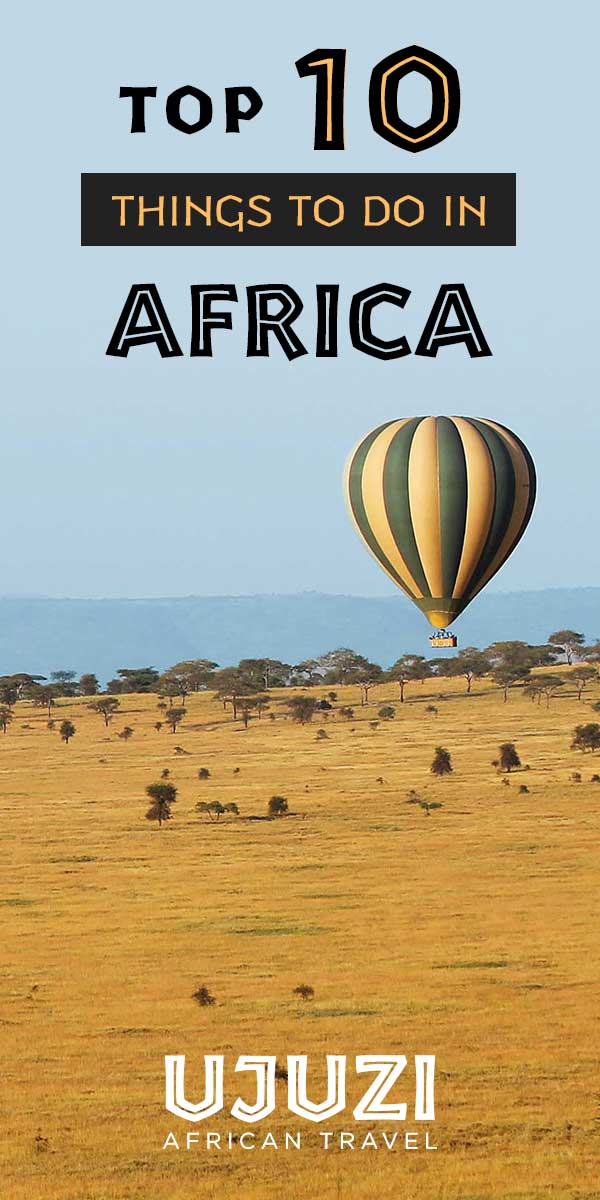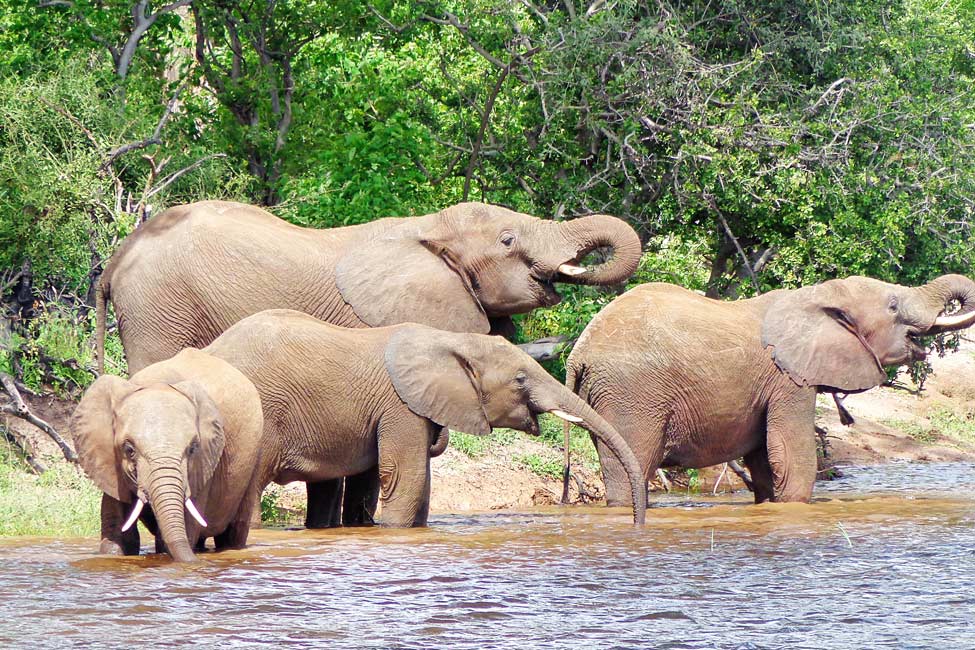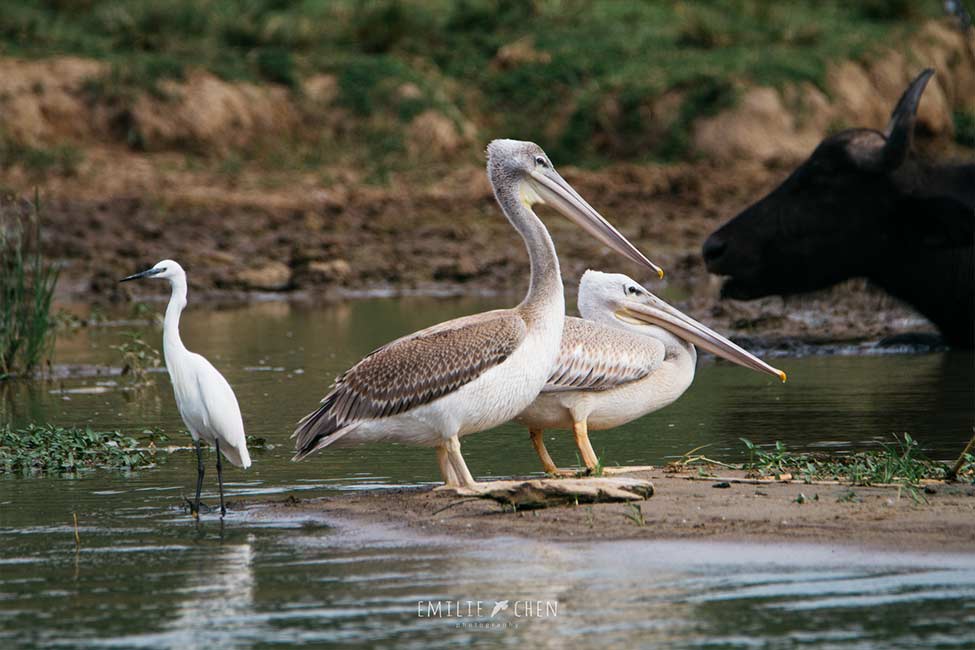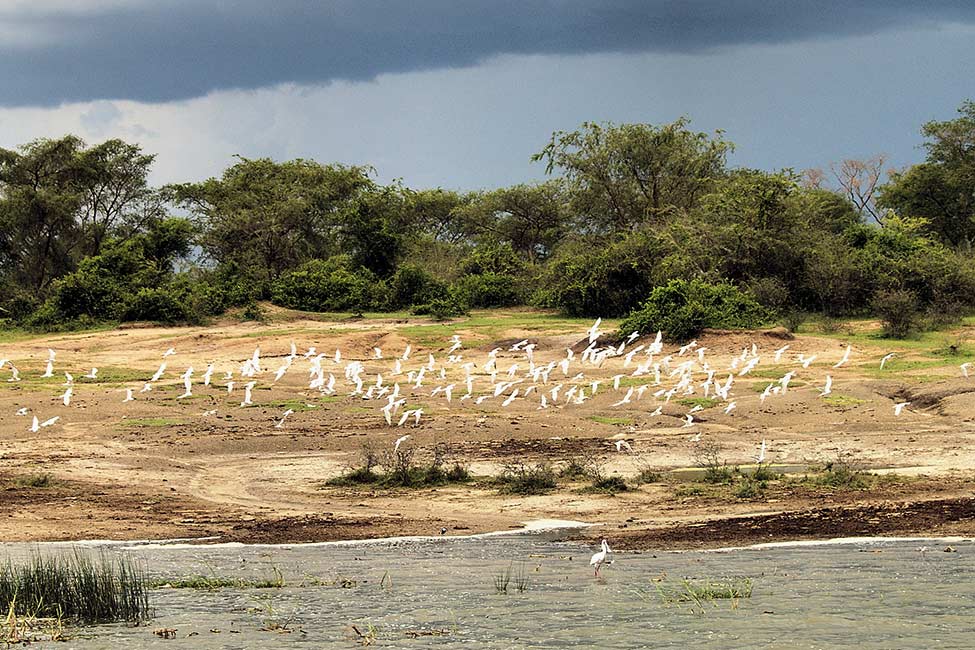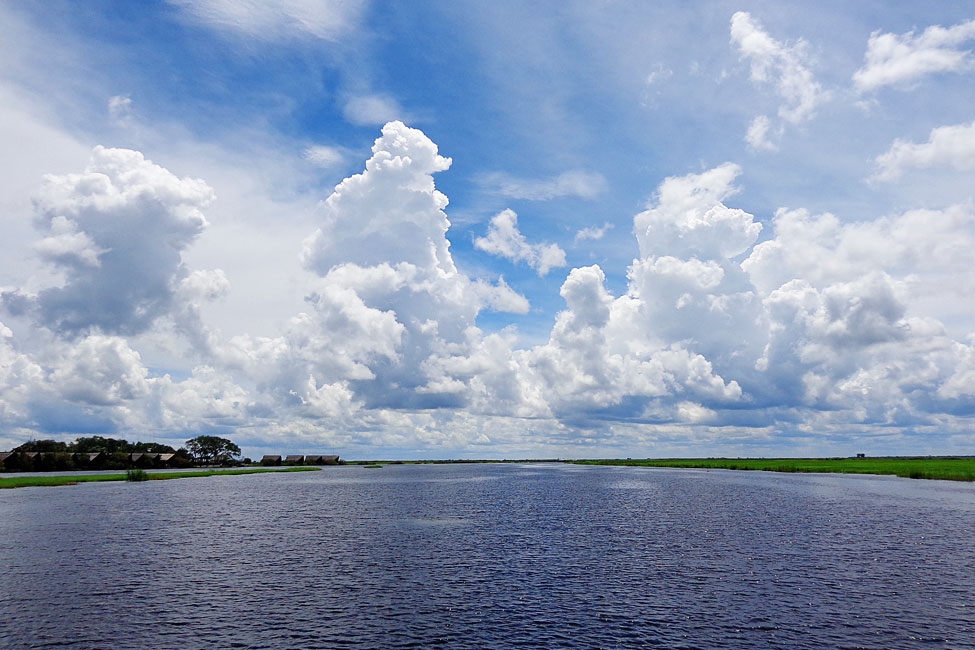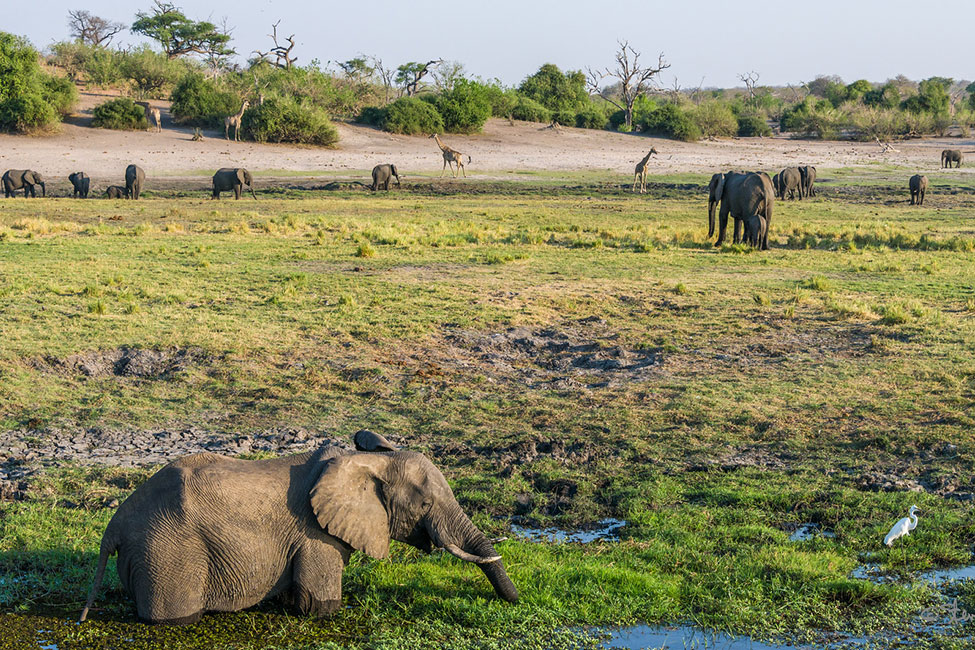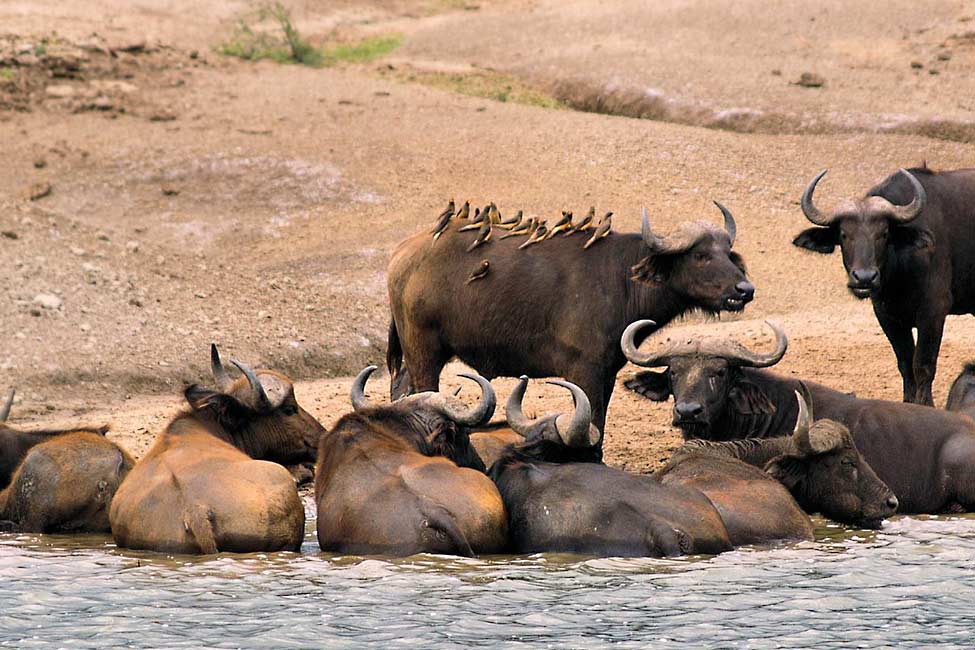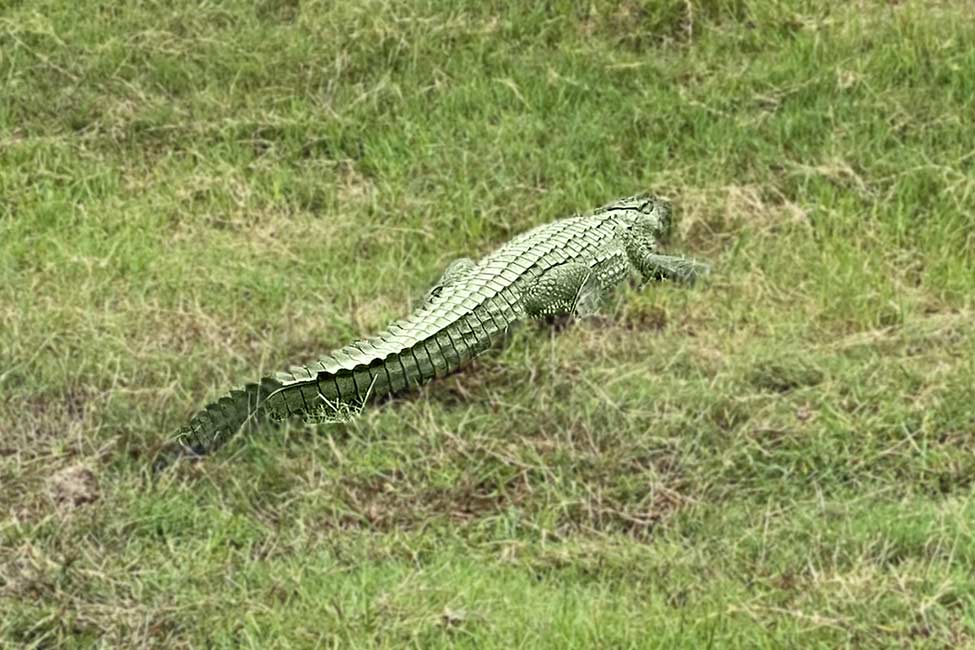Top 10 Things to Do on an African Safari
The word safari typically conjures up images of elephants at a watering hole and lions on the prowl. But it can encompass so much more. In fact, its original meaning in the East African language of Swahili is journey—and your journey through Africa can include all kinds of adventures. In this spirit, we offer our list of top ten things to do on an African safari, in no particular order. From wildlife activities like game drives to bucket-list thrills like flying over Victoria Falls, a journey through Africa lets you experience the world as you never have before.
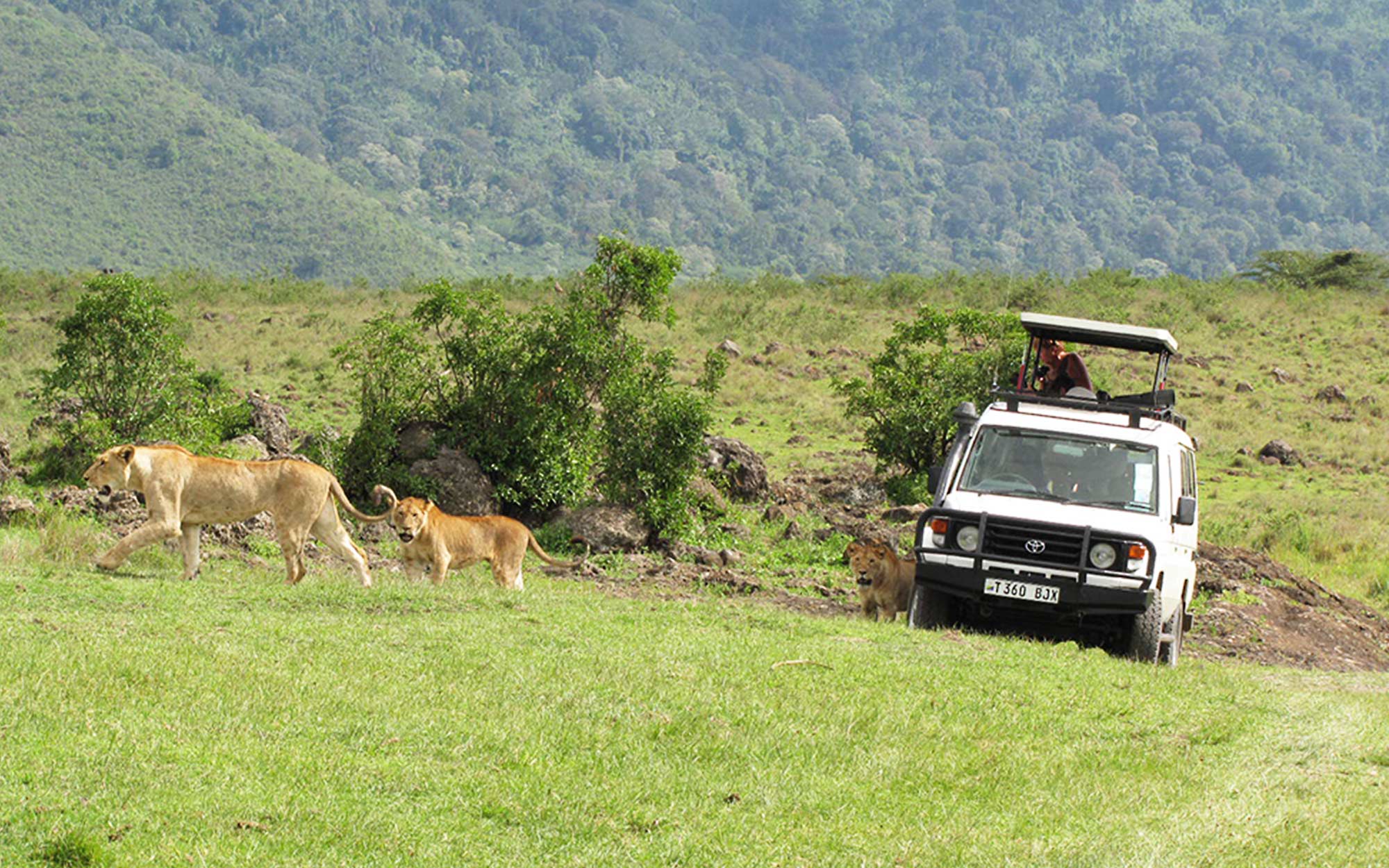
See animals up close in their natural habitat when you visit a national park or private reserve.
1. Go on a Game Drive
There is nothing more iconic than waking up at dawn to ride off in search of wildlife. Your first game drive will bring butterflies of excitement and anticipation.
As the sun rises over the bush, what will you find? A cheetah prowling at the edge of a gazelle herd? A family of elephants strolling toward its favorite watering hole? Or maybe a crocodile lying in wait for wildebeest to make a river crossing as part of their Great Migration?
Game drives exemplify the modern African safari. Under the tutelage of a friendly, expert guide, you go deep into untamed areas that would be difficult to explore by foot.
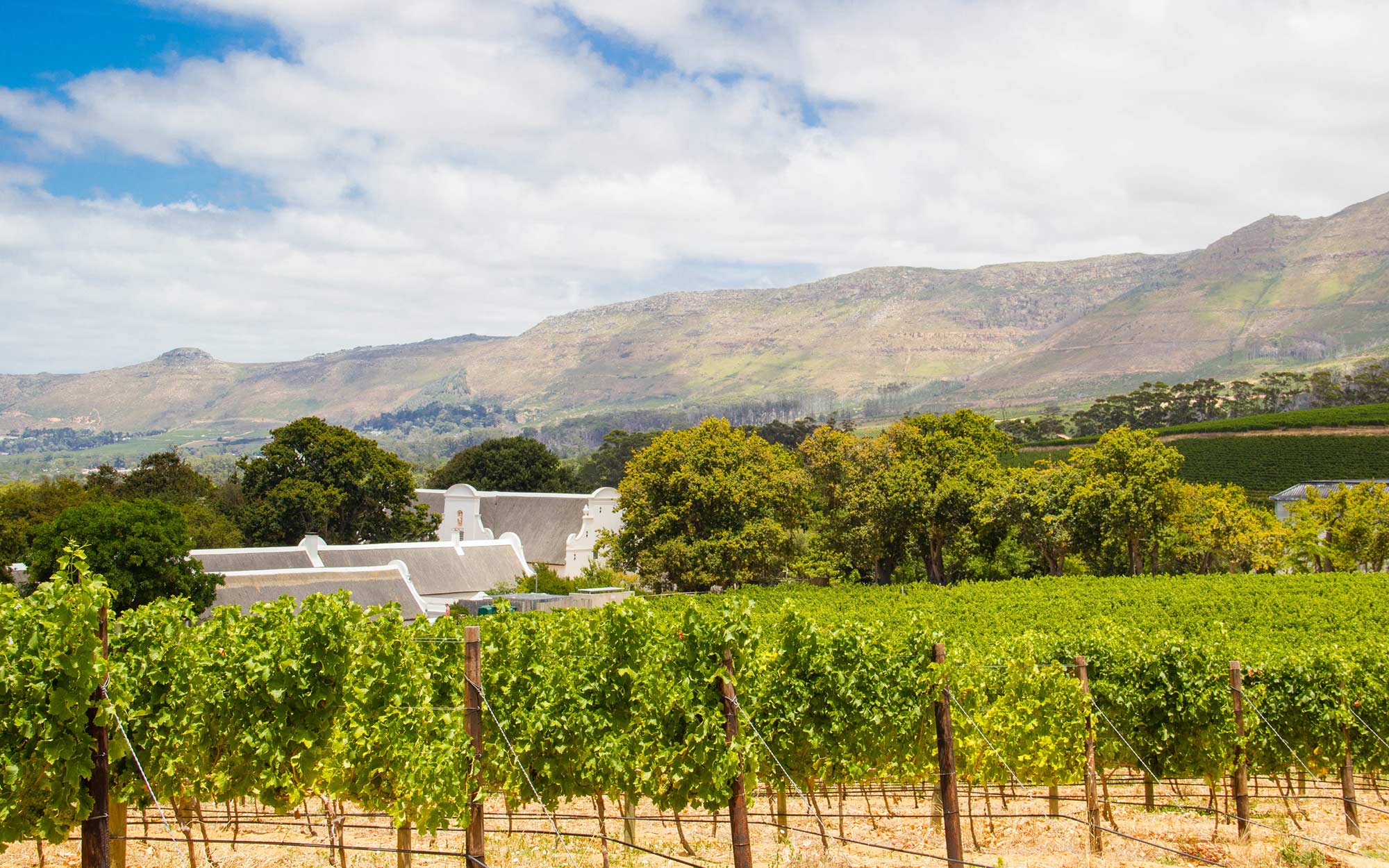
The Cape Winelands boasts some of the most prestigious wineries on in the world.
2. Tour the Cape Winelands
Wine tasting is one of the best ways to spend a day in South Africa’s beautiful Western Cape. It offers rolling landscapes, centuries-old architecture, and gourmet cuisine that attract locals and visitors alike. Learn about the ancient art of viticulture and taste the numerous varieties of wine that have their roots in the Western Cape’s fertile soil.
A tour of the Winelands is an easy day trip for travelers staying in Cape Town. It’s an excellent activity for the beginning of a safari, helping you ease into the new time zone before you launch into wildlife activities.
Our Winelands & Wildlife sample itinerary offers one example of how to incorporate the Winelands in a South African safari.
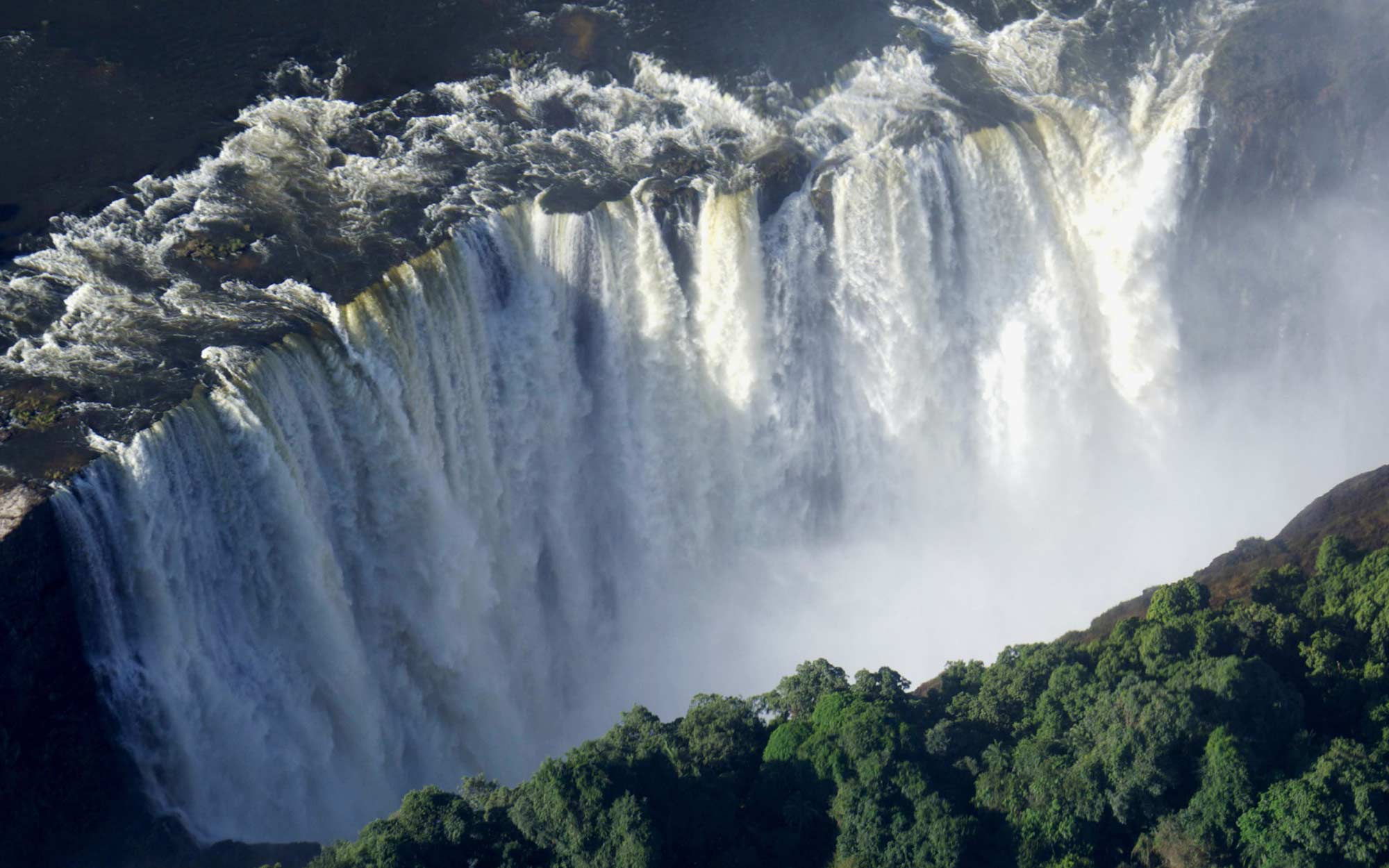
The world’s largest waterfall, Victoria Falls, is also one of the seven natural wonders of the world. Scottish explorer David Livingstone said of it, “Seems so lovely, it must have been gazed upon by angels in their flight.”
3. Soar Over Victoria Falls
As the largest waterfall in the world, Victoria Falls is so enormous that it cannot be seen in its entirety from land. That’s why many travelers choose to fly over it.
Victoria Falls roars along the border between Zambia and Zimbabwe in southern Africa, and flights start from both countries. Helicopters are a popular option for photography aficionados, facilitating shots that capture the tremendous power of the falls.
Or take a more intimate approach in a microlight aircraft. These agile machines are similar in structure to gliders, with open-air seats suspended below the wings. You’ll feel the wind against your skin and hear the powerful cascade of water as your pilot guides you over Victoria Falls. Flying over the falls won’t turn you into an African fish eagle, but you might feel like one as you soar through the sky.
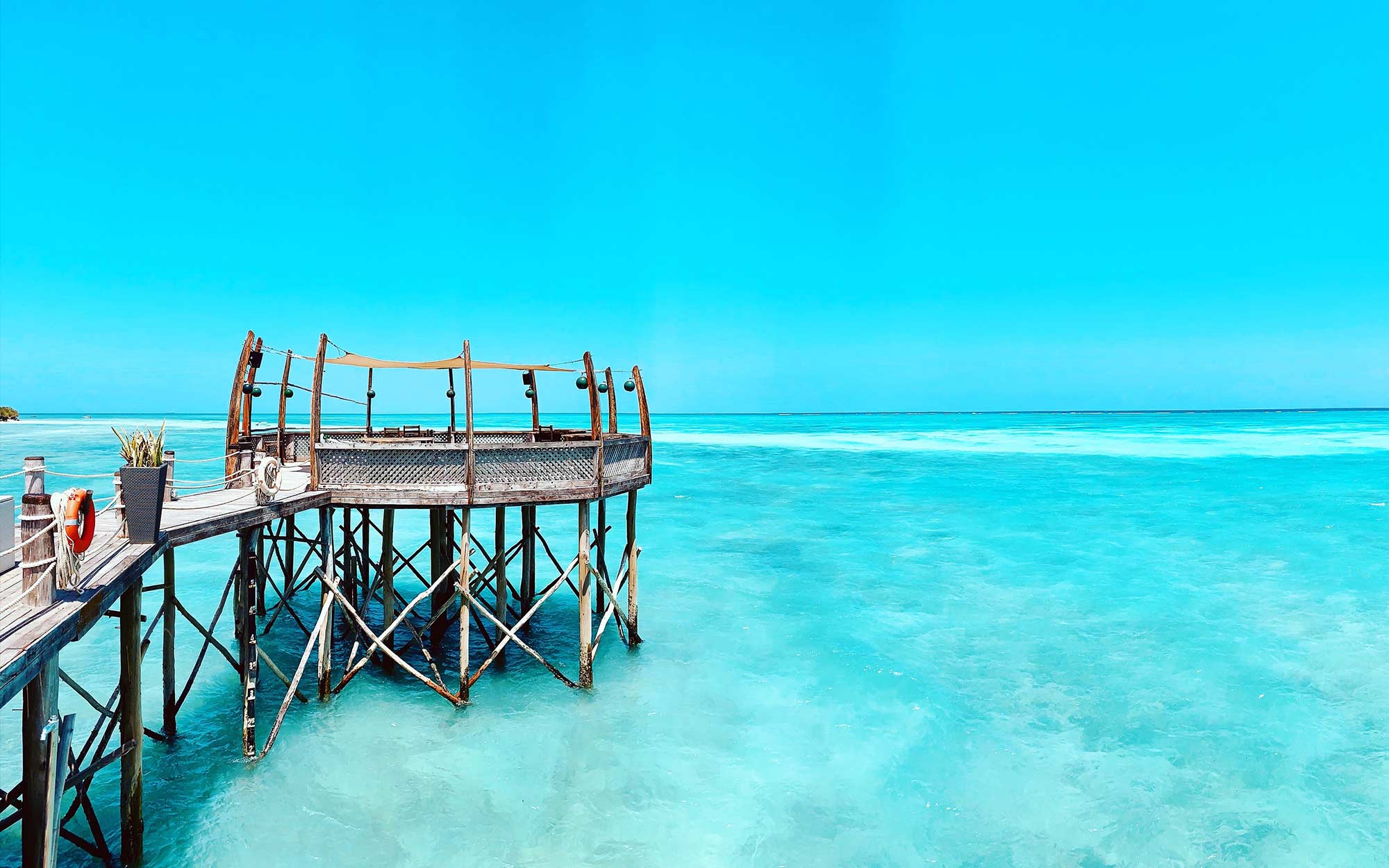
Glistening turquoise waters stretch for miles along Africa’s Indian Ocean coastline.
4. Relax on the Beach
Some of the world’s finest beaches are found in Africa. The white sand and blue waves of the coral-fringed Swahili Coast glitter like jewels along the eastern edge of the continent. Out in the Indian Ocean, African islands like Madagascar, Zanzibar, and the Seychelles dot the waters like scattered pearls.
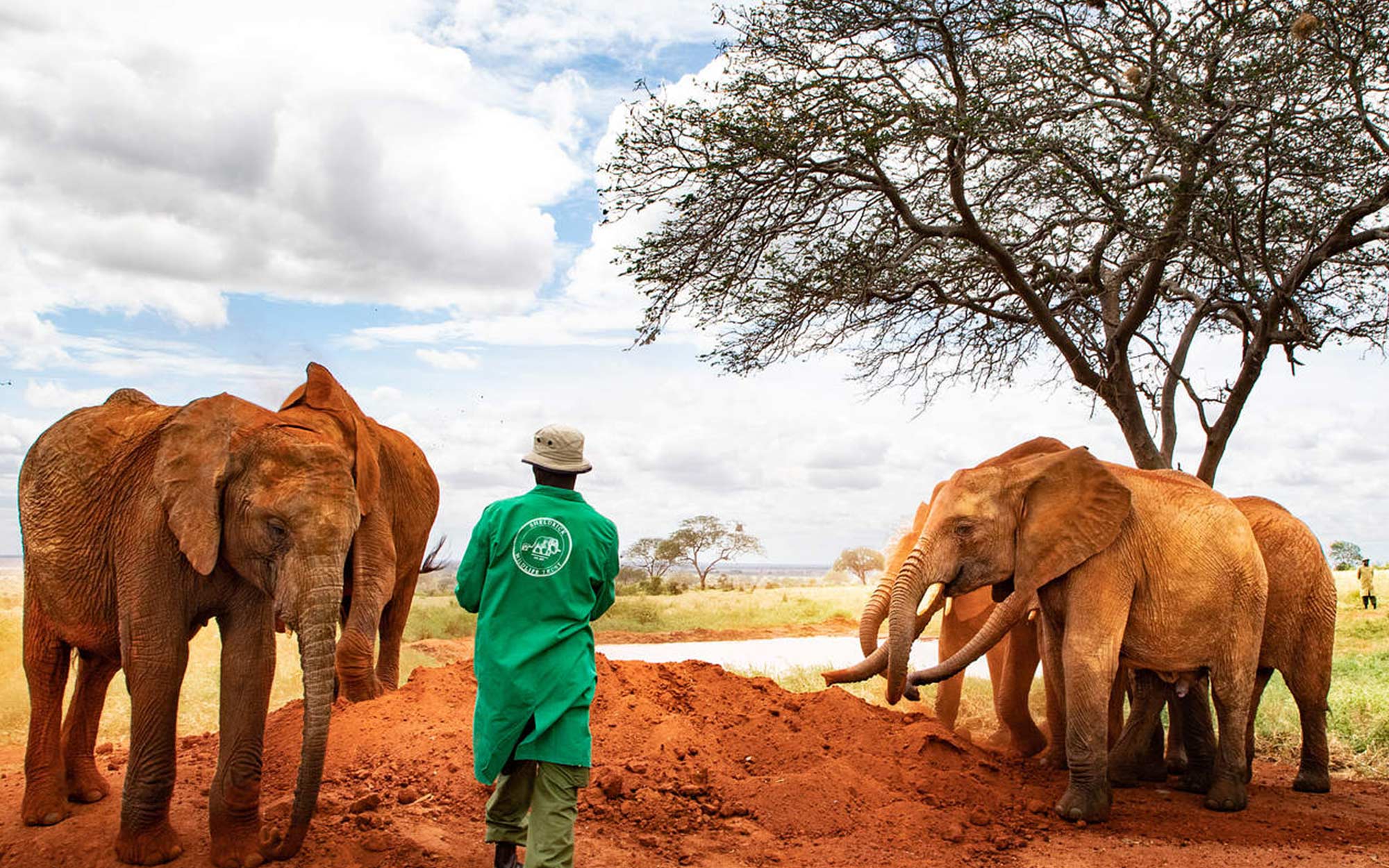
Best known for their work to protect elephants, the Sheldrick Wildlife Trust operates the most successful orphan elephant rescue and rehabilitation program in the world. Photo credit: Sheldrick Wildlife Trust
5. Visit an Animal Conservation Project
Africa is famous for its many large mammals—in fact, it has more large mammal species than any other continent. But habitat destruction and illegal hunting threaten this diversity. Thankfully, many charitable organizations have sprung up over the past several decades to ensure the continued survival of Africa’s iconic wildlife.
Our travelers to Kenya frequently enjoy visits to the Giraffe Centre in Nairobi, as well as to the Orphans’ Project of the David Sheldrick Wildlife Trust, a temporary home for orphaned elephants and rhinos.
In Namibia, you can stay at Okonjima reserve, home to the AfriCat Foundation, which is dedicated to preserving carnivores and runs the country’s only research project on free-roaming pangolins.
Ujuzi strives to include a visit to a conservation project on each of its safaris—whether it’s a visit to the Dian Fossey Gorilla Fund on our 3-night mountain gorilla trekking extension in Rwanda or snorkeling among seahorses as part of a Mozambican anti-poaching project on our Big 5 & Beaches safari.
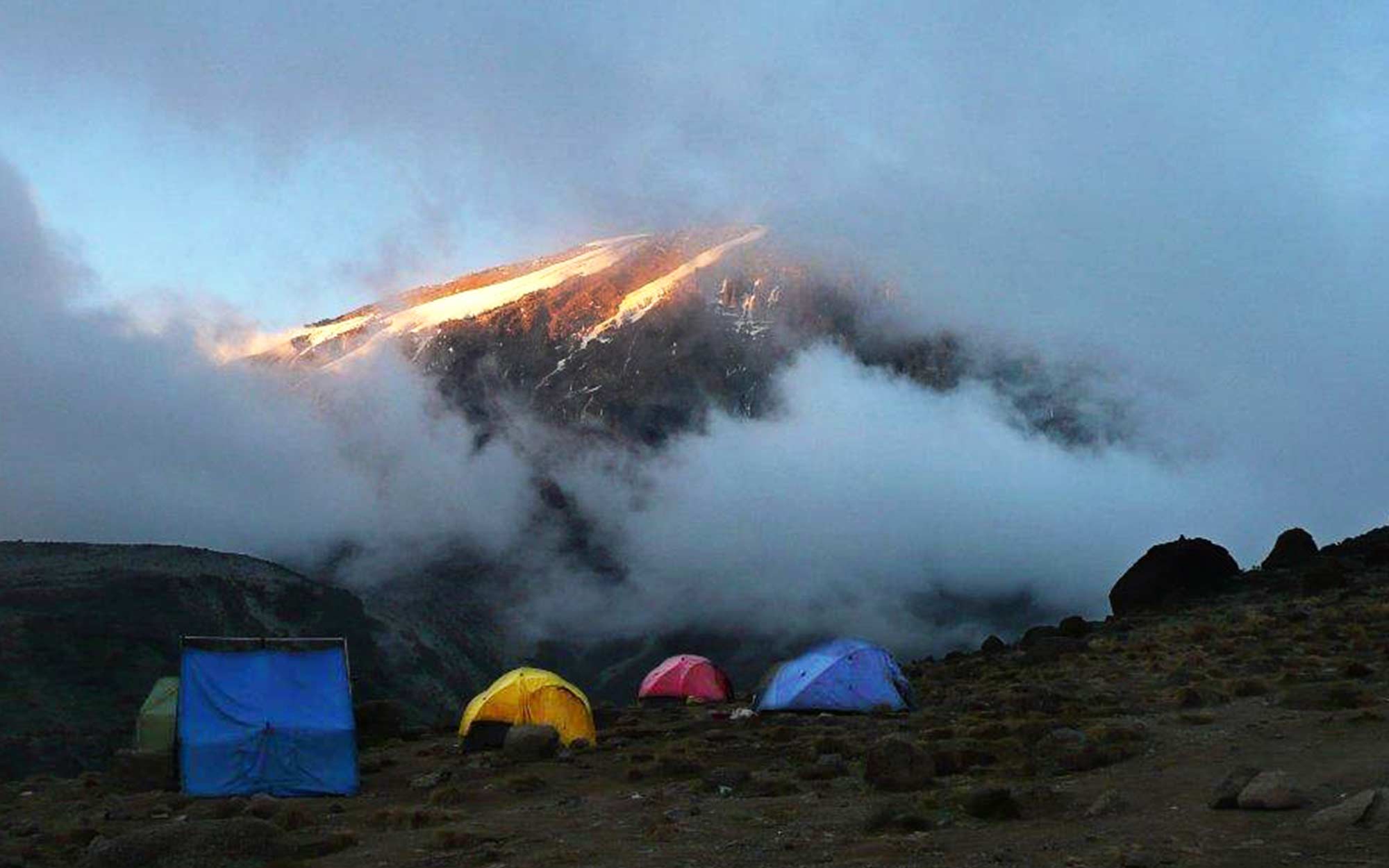
Mount Kilimanjaro, known as the Roof of Africa, beckons many an adventurer.
6. Climb Africa’s Tallest Mountain
At 19,341 feet, Mount Kilimanjaro is not only the tallest mountain in Africa, it’s the tallest freestanding mountain in the world. Despite its impressive height, you do not need special mountaineering skills to climb “Kili.” All seven trails to the peak are hiking trails, so you will not be scaling any cliff faces as you ascend the Roof of Africa.
But the climb does require fitness, patience, and the ability to tolerate high altitudes. It’s a truly rewarding experience—not only for the sense of accomplishment, but also for the beautiful scenery you encounter along the way.
The wildlife is magnificent as you cruise down the rivers and channels in Africa. Photo credits: elephants bathing, Ujuzi African Travel; a great white pelican, Emilie Chen; birds in flight, Christine Olson, Chobe River, Ujuzi African Travel; elephants at Chobe River, Steven dos Remedios; Cape buffalo, Christine Olson; crocodile in river grass, Ujuzi African Travel
7. Enjoy a Boat Cruise
See wildlife from a different point of view. Explore Africa’s waterways by boat!
During the dry season, animals congregate daily on the shores of lakes and rivers to bathe, drink, and play. And when you’re on a boat, there’s nothing in the way of you seeing these amazing creatures!
Boat cruises can be taken at sunrise, sundown, or the middle of the day, and they generally last 2–4 hours. The atmosphere is more relaxed than a game drive and may include cocktails and appetizers, especially for sunset cruises.
Read about some of our favorite places in Africa to go on a boat cruise.
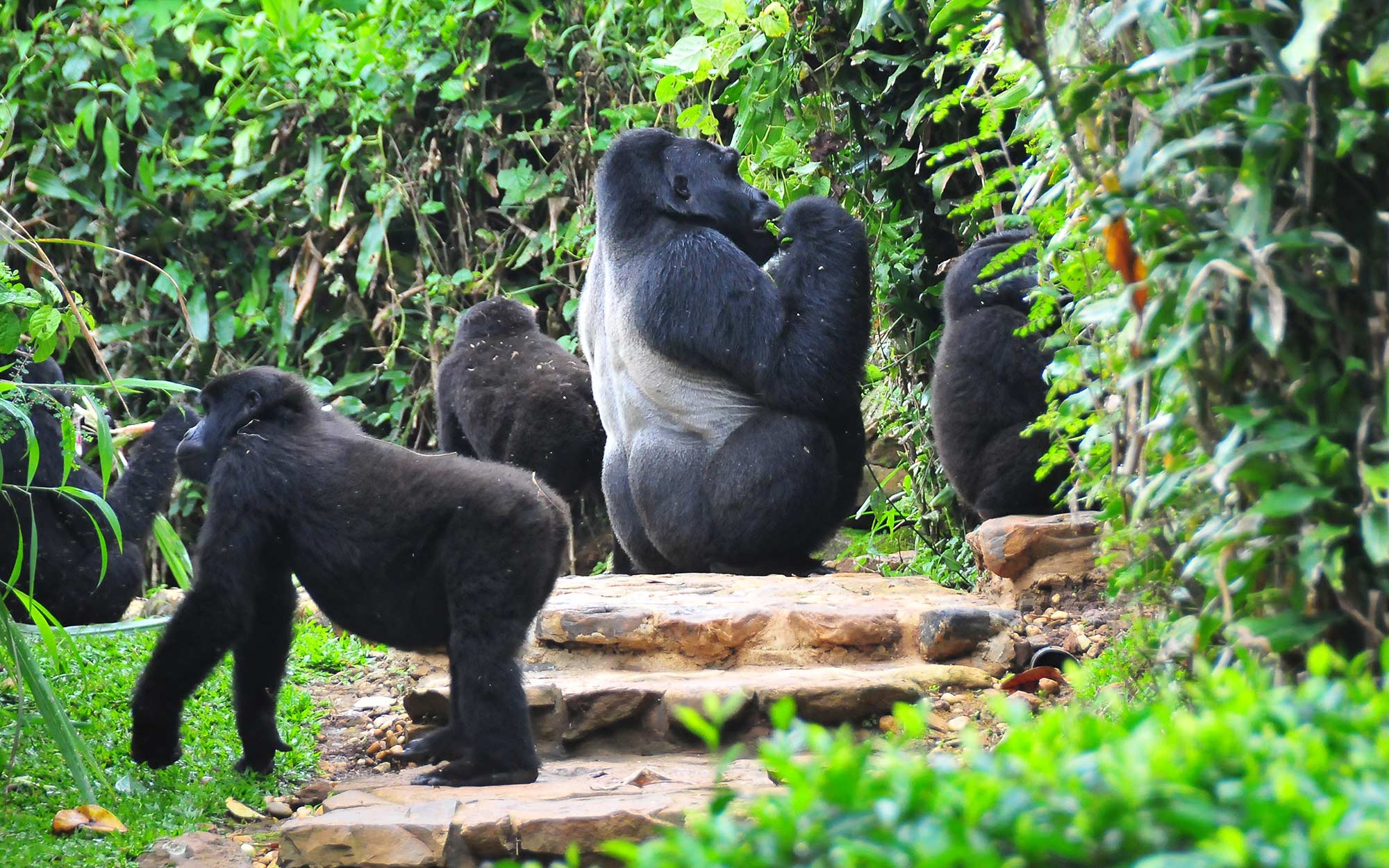
The Rushegura mountain gorilla family browses along a trail in Bwindi Impenetrable National Park, Uganda. Photo by Matthias Mugisha, Uganda Wildlife Authority.
8. See Mountain Gorillas
Encountering mountain gorillas in the wild is an intense and unforgettable experience. Like humans, they have strong family bonds, enjoy playing and exploring, and develop friendships. Watching a mountain gorilla mother nurse her baby while older siblings and cousins play nearby, you may even be reminded of your own loved ones.
Bwindi Impenetrable Forest in Uganda and Volcanoes National Park in Rwanda are the best places to see mountain gorillas. To protect these endangered animals, the parks limit the number of visitors who can see them each day.
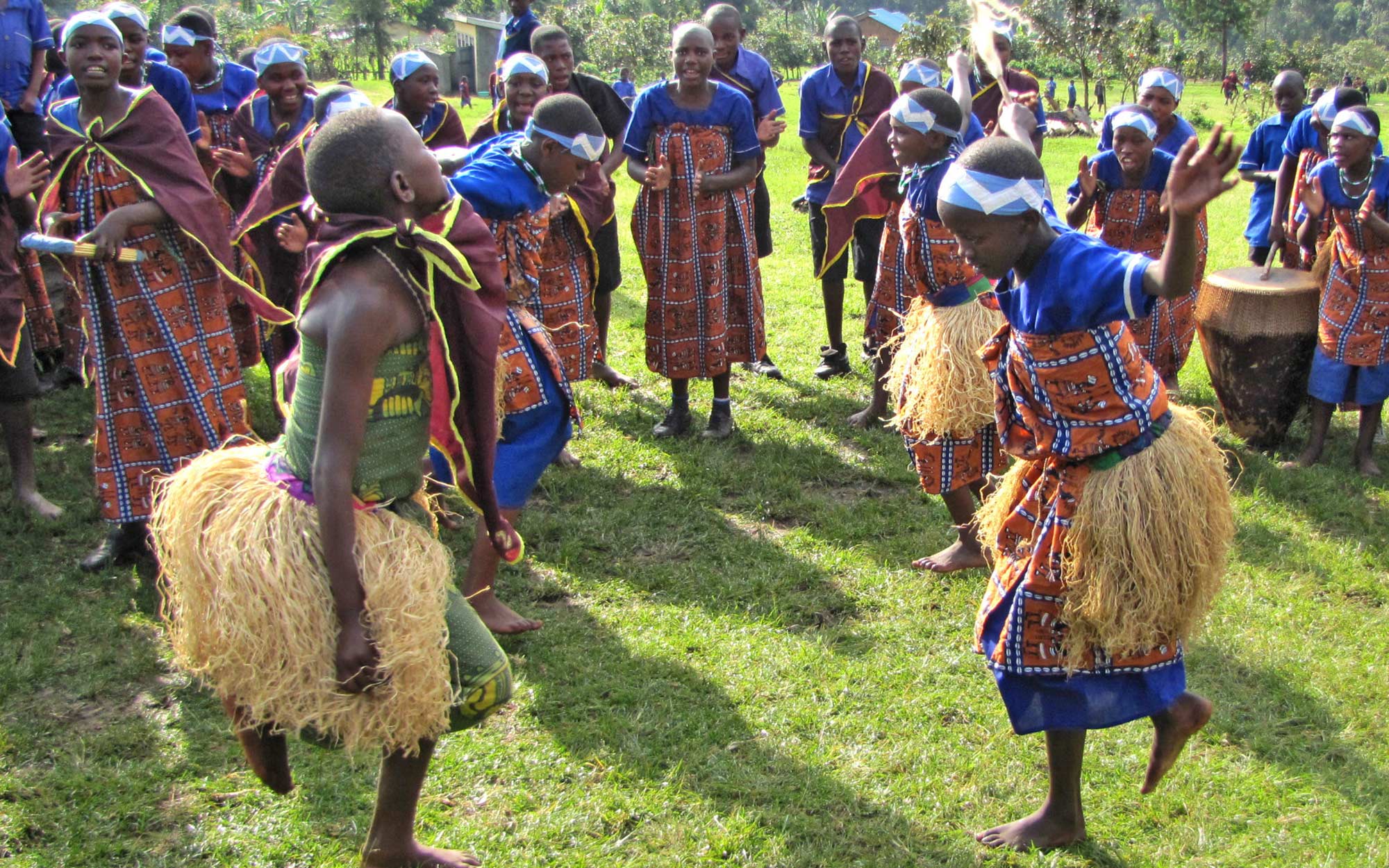
Children dance in Rubuguri, Uganda. Photo by Beatrice Tusiime, Uganda Wildlife Authority.
9. Learn About a Different Culture
Africa is home to thousands of ethnic groups, each with its own cultural traditions and language or dialect. There is not a single African way of life.
Just by talking with your guides, you can learn a lot about the cultures of the places you’re visiting. Staying at a lodge or reserve owned by local people is also a great way to engage. At Mara North Conservancy in Kenya, for example, you may be joined at dinner by one of the 800 local Maasai who own the reserve’s land. Spending time in conversation creates a meaningful cultural exchange.
Visits to local villages, schools, museums, and memorials are other ways to learn. Near Bwindi Impenetrable Forest in Uganda, for example, you can get lessons in local cooking from community women or learn about medicinal plants from a traditional healer. In Nairobi, you can take in Kenyan art and history at the National Museum or enjoy a neighborhood tour to understand daily life.
Our Madagascar itineraries offer a great mix of wildlife and culture. On our Madagascar Baobabs, Rainforests & Deep South safari, you’ll see a lot of lemurs, but you’ll also take in some of the island’s history at the Queen’s Palace, learn about traditional papermaking and woodworking, and ride the rickshaws of Antsirabe.
Whatever country you visit, there are infinite ways to learn about the local culture!
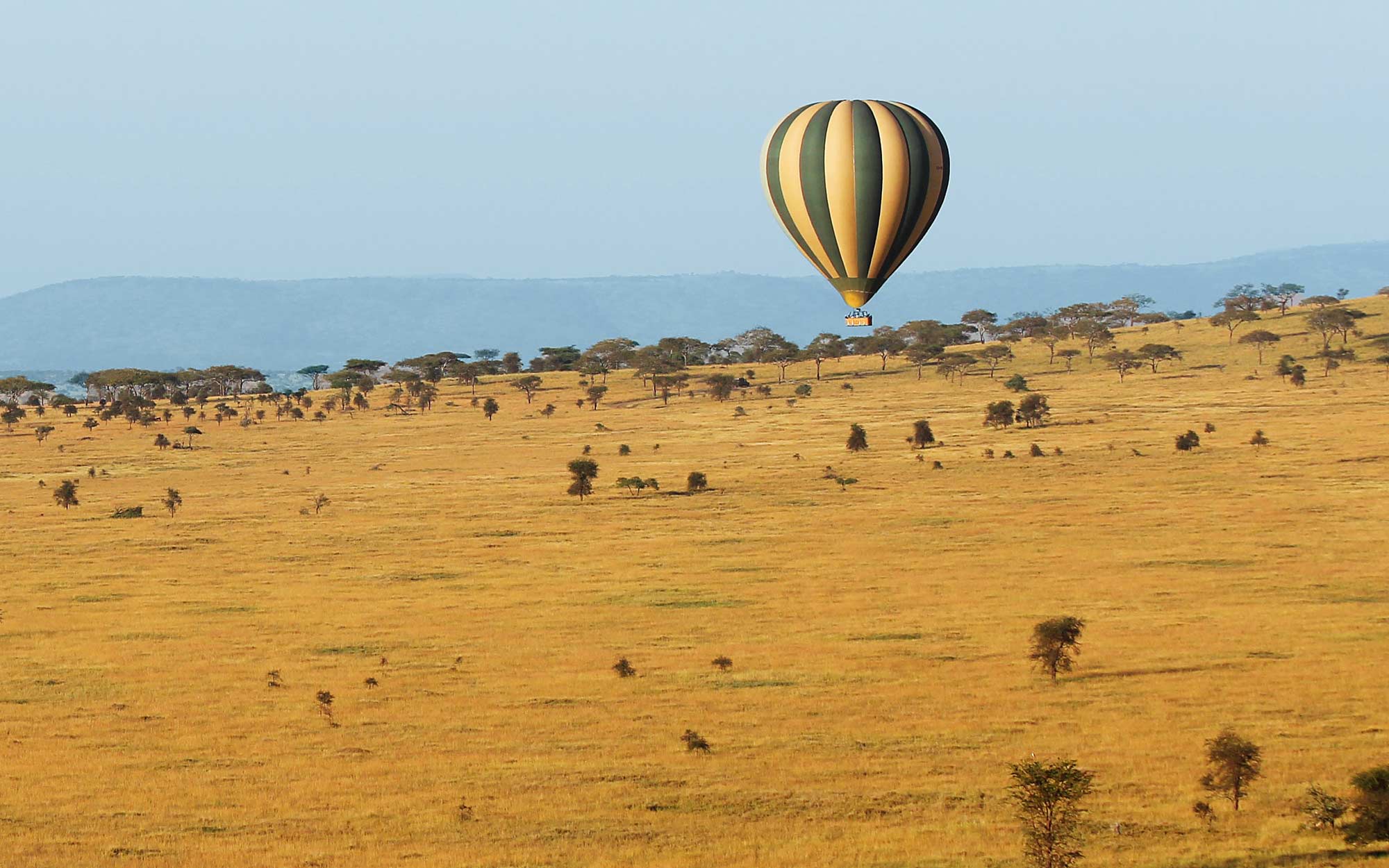
An experience that is not easily forgotten, a balloon safari offers a bird’s eye view of African wildlife.
10. Enjoy a Hot Air Balloon Ride
Experience the natural wonders of Africa from a bird’s-eye view. Balloon safaris are available at many safari destinations, including Maasai Mara in Kenya, the Serengeti in Tanzania, Queen Elizabeth National Park in Uganda, Okavango Delta in Botswana, and the Western Cape in South Africa.
Views from a hot air balloon are positively breathtaking. Fly at treetop height for close looks at animals, then ascend to 1,000 feet so you can take in the enormity of the skyline. A balloon safari provides a unique and thrilling way to see the world’s most beautiful continent.
Which Experience Is on Your Bucket List?
Whether you prefer the thrill of flying over Victoria Falls or the more sedate promise of a sunrise over the Indian Ocean, Africa has something for everyone. Ujuzi African Travel can include one or all of these top 10 activities in a custom itinerary just for you.
Take a journey like no other. Contact us today so we can create the safari of your dreams.
Pin This Post!
